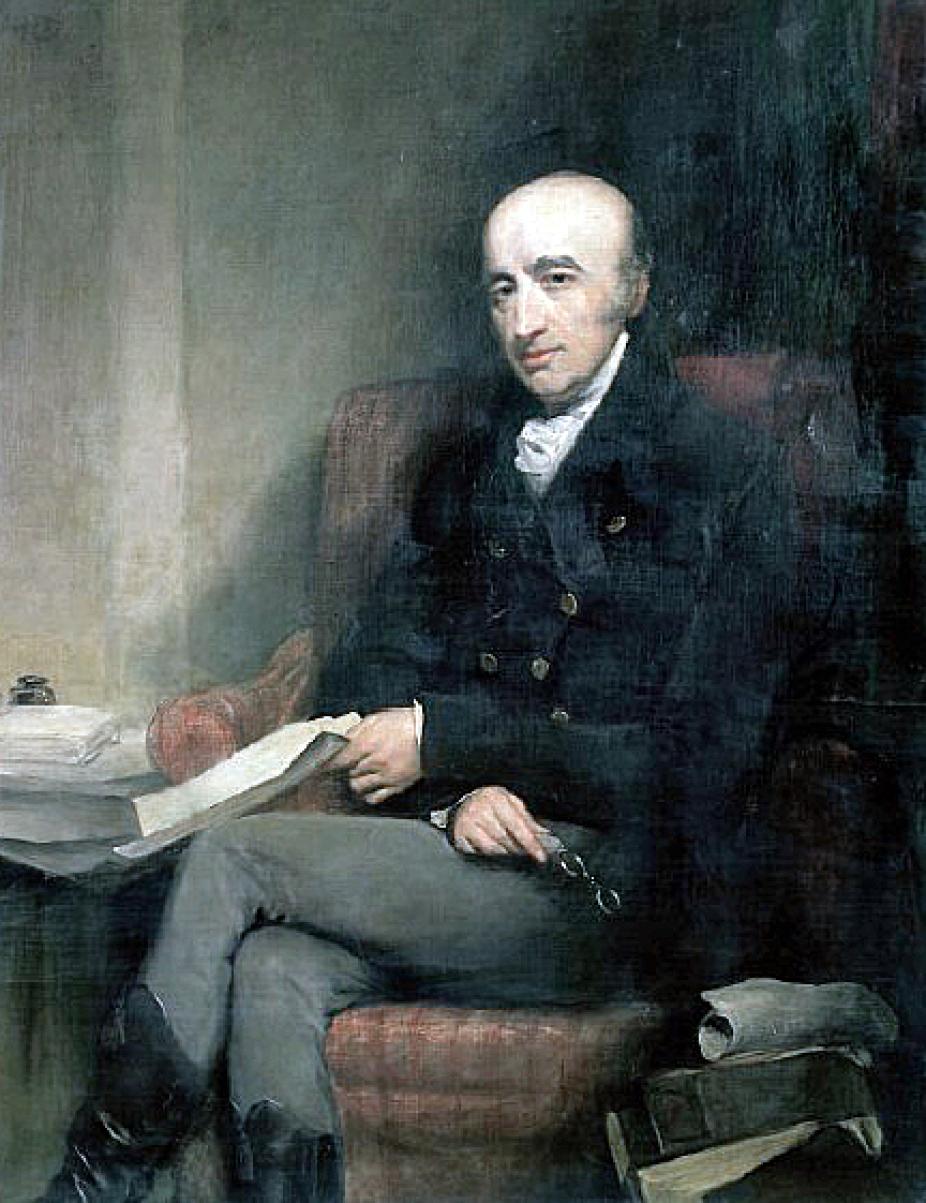William Hyde Wollaston (1766–1828)
William Hyde Wollaston was born on August 6, 1766 in Norfolk, UK. He obtained a doctorate in medicine from Cambridge in 1793. While practicing medicine for many years, he also became interested in chemistry, physics, crystallography and metallurgy, to which he devoted himself fully from 1800 onward.

Painting of William Hyde Wollaston.
Wikipedia
In the early 1800's he developed a physico-chemical method for the processing of Platinum ore, which made him a wealthy man and led him to the discovery of the chemical elements Palladium (1803) and Rhodium (1804). He invented various optical instruments for the measurement of angles between crystal planes, of the refraction index of transparent solids, and to aid in accurate microscopic observations. In the last years of his life he carried out electrical experiments paving the way to the design of the electric motor. He became involved in a priority controversy with his fellow countryman Michael Faraday (1791–1867), who was undoubtedly the first to produce a workable electrical motor design, and remained reluctant to grant Wollaston credit for his earlier work.
Wollaston's claim to astronomical fame rests on his observations of dark lines in the solar spectrum. He noticed these while carrying out optical experiments aimed at determining refractive indices of various transparent substances, but did not attach great importance to this discovery, leaving it to Joseph von Fraunhofer to rediscover and study them in great detail fifteen years later.
Wollaston was widely considered as one of the leading scientists of his time. He was elected to the Royal Society in 1793 and served as its Secretary from 1804 to 1816. He died in London on December 22, 1828.
Bibliography
Porter, R. (ed.) 1994, The Biographical Dictionary of Scientists, Oxford University Press.